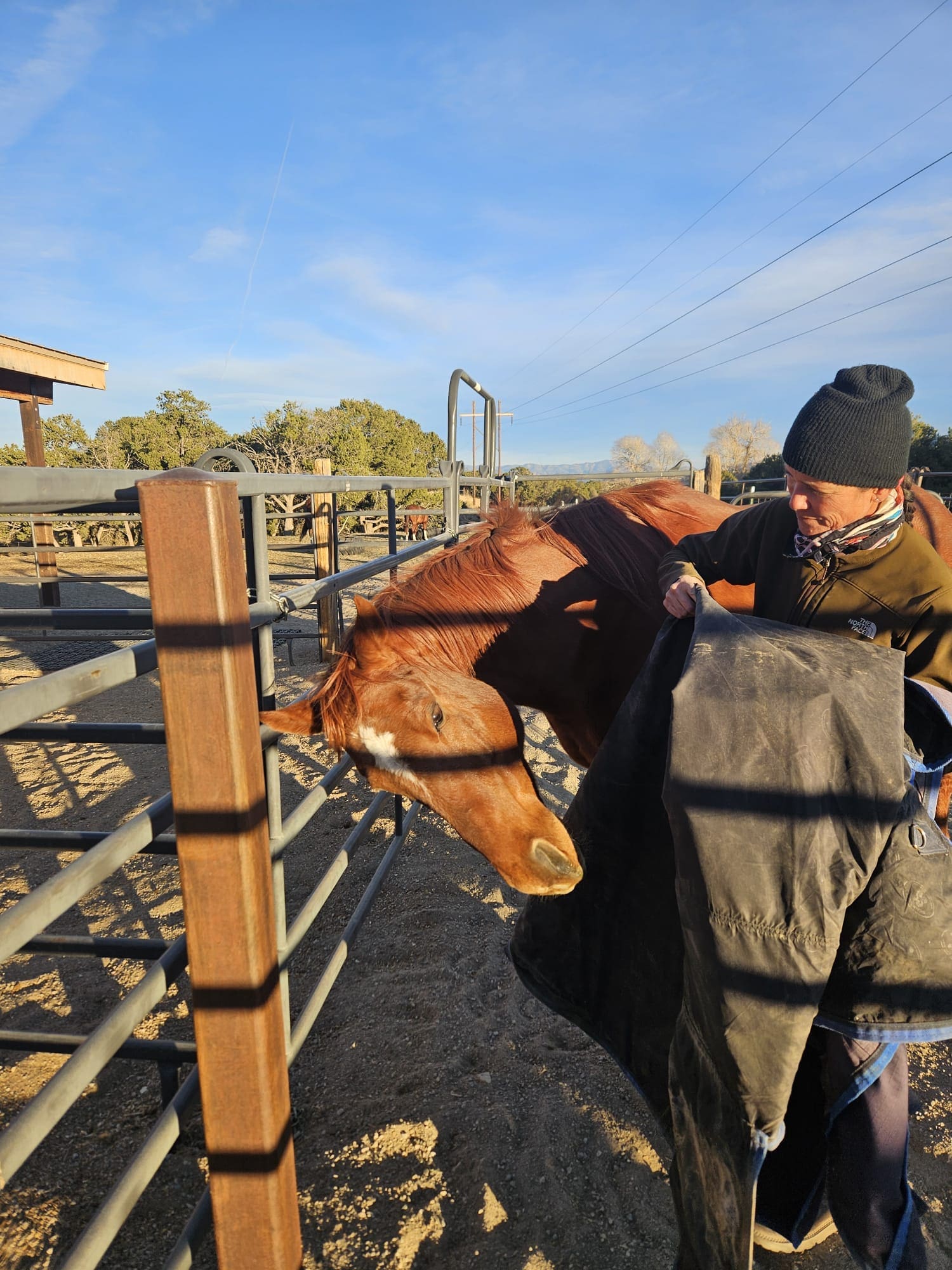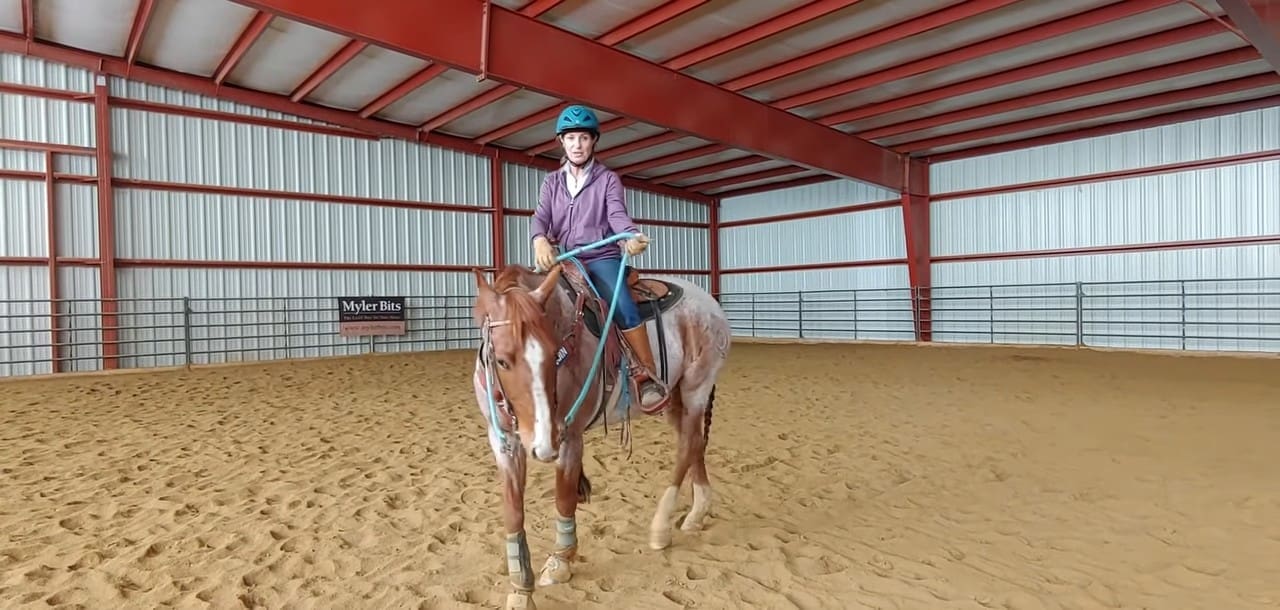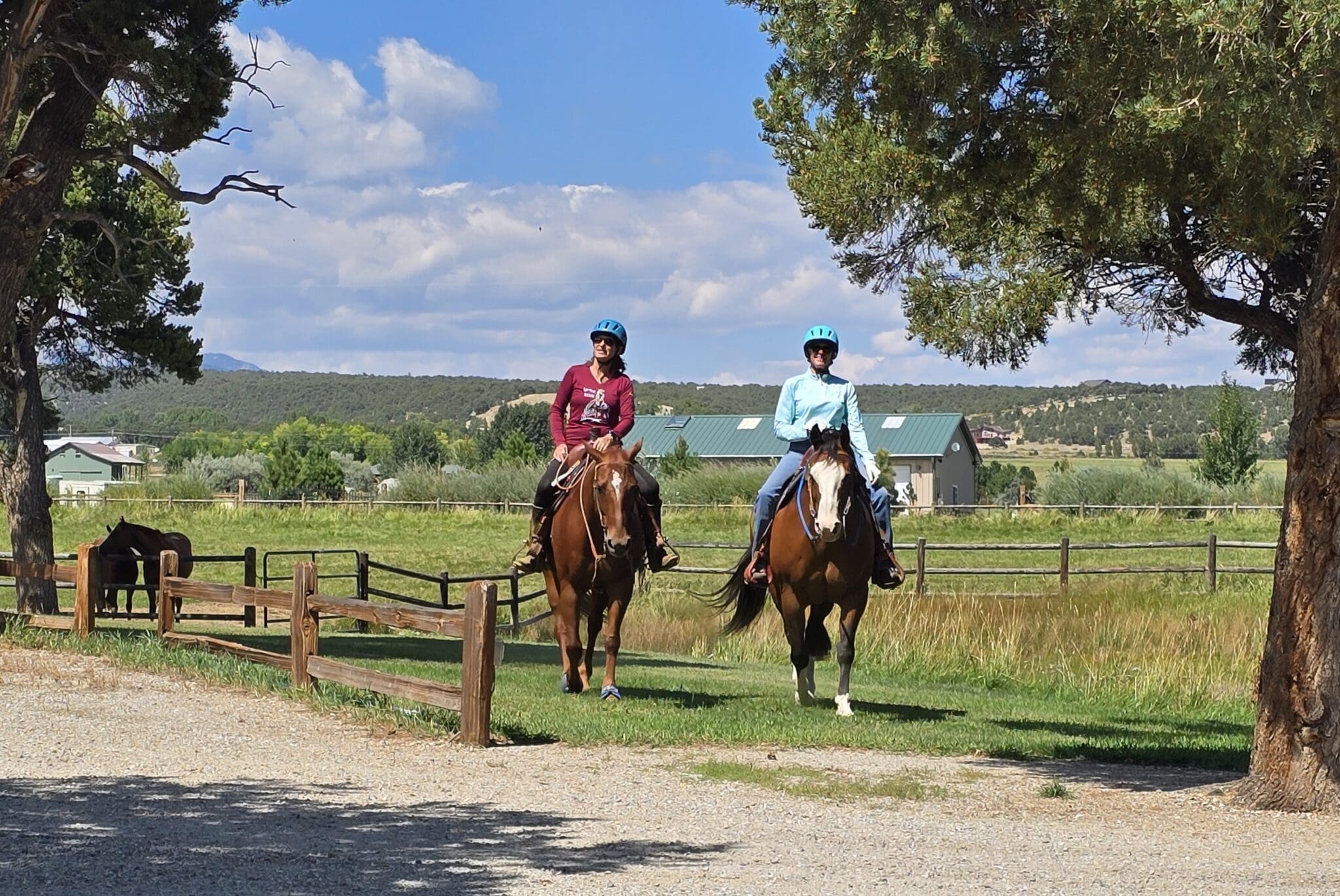Question Category: Issues from the Ground
Question: Hi Julie,
Training concern: Horse won’t stand still to be groomed. I have a 16 hand QH gelding that I have had since October. I am a new horse owner and up until about 3 weeks ago, have managed to cross tie or tie him to a hitching post to groom and tack him. His behavior has changed in the last 3 weeks and he won’t stand still. He moves from side to side, head high, whinnies at his friends and is very disrespectful. I try to correct him without success. What I end up doing is taking him into the arena, and longeing him so that I can get him to be responsive to me. He settles a bit, but continues to be a challenge. Once I am able to saddle him and bridle him, riding is not a problem and he settles down. I’m at a loss as to how to correct his behavior so he will stand still to be groomed and tacked in a safe environment. What used to be a pleasurable experience has become exhausting, scary, and a challenge! I know he is not respecting me and I’m not sure how assertive I should be to get him to be obedient. How much and what types of pressure should I apply to get him to listen to me? I have watched both the round pen and lead line DVD’s. How can what I have learned from these be applied to getting him to stand still?
Thanks
Answer: A: If you have studied the ground work DVDs, then you already know what to do to train your horse to stand still on your authority—the entire first part of the Lead Line Leadership DVD is devoted entirely to that. Once you have control over your horse’s feet, you should be able to cue him to stand still at any time—leading, mounting, or grooming.
As the leader, it is up to you to make the rules and enforce them. When you are doing groundwork with horses, you are explaining the rules (stand still when I say, don’t look around, move when I move, don’t crowd me, always move out of my space). He learns by making mistakes (like unauthorized movement) and then getting corrected for them (by you applying pressure with the rope the instant he makes the mistake). When he is doing the right thing, you leave him alone—that’s his favorite reward—and that’s how he learns that doing the right thing is easy and doing the wrong thing means he gets in trouble.
Rules are rules and you have to enforce them 100% of the time—whether you are practicing your ground work or standing at the tie rack or riding. To a horse, you are only the leader if you act like the leader all of the time. If your horse is becoming increasingly disobedient, he clearly does not accept your authority and is increasing his efforts to make sure you understand that you are not the boss of him. He’s probably better when you are riding because he has more training under saddle to fall back on (he understands the rules better). But eventually this erosion to your authority will become increasingly apparent under saddle too.
Being a new horse owner, there is so much to learn and so many mistakes to make! Right now, you probably don’t even know what mistakes you’ve made that have led to the erosion of your authority, but your horse does. My suggestion is that you review my groundwork videos again—with your recently gained experience you may get more out of them now. It is a proven formula for success and I guarantee you it will work, if you do it right, for teaching your horse to respect your authority, to have good ground manners and learn to stand perfectly still whenever you ask him to.
After reviewing the videos again, you should have a good understanding of the technique you will use to teach your horse to stand still, but there are two important concepts that you must understand before you will have success: timing and pressure. These are science-based concepts in animal training and horse behavior that are critical to having success with training your horse.
Horses learn by making associations between their actions and a reward or punishment. With training techniques, we are trying to make intentional associations like when I say “whoa” you stop. Sometimes horses make associations that we do not intend, like he gets stung by a bee when he is looking at a mailbox and he associates the pain of the sting with the mailbox and becomes permanently afraid of mailboxes. As you train him for riding, he learns that when he feels pressure from your legs, if he speeds up, the leg pressure will go away—thus, he has made an (intentional, or trained) association between your leg pressure and him speeding up.
In order for the horse to make an association between your actions and his actions, the reward, release or punishment must occur within three seconds of his actions. But the sooner in the three seconds the correction (in the case of unwanted behavior) or reward/release (in the case of wanted behavior) occurs, the more likely the horse is to make an association and the stronger the association will be. The optimal time frame is one half of one second. So when a horse is not responding to your corrections, it could be because your timing is too slow.
A half of a second comes and goes quickly, but it is not by any means impossible to be this quick in your correction. If you understand what behavior it is you are correcting and how to apply the correction, you should be able to do it within a second. A huge factor in how successful you are as a trainer is because of timing—both on the correction and on the release (reward). As a novice horse person, it is hard to be as timely as you need to be, because you still have to think about it. A seasoned professional reacts without having to think about it so the timing, and therefore the training, is much more effective.
In addition to having good timing, you also have to know how much pressure to use—and for each horse and each scenario, the amount of pressure is different. However, the science-based concept of training all animals (including humans) says that however he is acting right now is the way he is most motivated to act. And if you wish to change that behavior, you have to find the amount of pressure that motivates change. In other words, it has to be enough pressure that makes the horse stop and think about what he is doing and think about how he can avoid that pressure in the future.
Many factors influence the amount of pressure that you use, including how sensitive your horse is to physical & mental pressure. Does he flinch easily, is he sensitive to criticism, does he feel and notice everything or nothing? An insensitive horse will always require more pressure to motivate him. A highly sensitive horse doesn’t need that much pressure and sometimes just the thought of getting in trouble is enough pressure to motivate him to change.
Other factors in how much pressure is required to change behavior is how motivated the horse is to be acting that way to begin with and how hard is it for him to comply? If he’s just fidgeting because he’s bored and wants to look around, he’s probably not that motivated. But if he is throwing a wall-eyed fit at being separated from the herd, his motivation may be greater—therefore require more pressure.
In the case of standing still, it’s not very hard for him to comply. Standing still does not require much physical effort at all (although in some situations it might require a huge amount of mental effort for the horse). Doing roll backs or piaffe would require a huge amount of physical effort for the horse, so it may require more pressure to motivate him to execute these maneuvers (which is the reason why you often see the use of whips and spurs in higher level training).
Whenever you find yourself making corrections over and over again for the same bad behavior and nothing changes, it is for one clear reason—you are not using enough pressure to motivate him to change. I have written a lot about this and you will find numerous articles about it in my Training Library. Teaching a horse to stand still is quick and easy when you use enough pressure to motivate him and have good timing, making it easier for him to make associations.
How do you know if you’ve used enough pressure? That’s easy—you’ve used enough pressure when the horse notices it (maybe throws his heads up and jumps back and looks at you like “what was that for?”). As soon as he notices it, he’ll start looking for a way out of it. I will always err on the side of too much pressure on the first correction I make—I’d rather only have to correct him once. Numerous corrections with not enough pressure is simply nagging your horse and not only does it not motivate him to change his behavior, it teaches him to ignore and disregard you and leads to a lot of animosity.
Hopefully this will give you some food for thought on how to be a better leader to your horse. When a trained horse’s behavior deteriorates, it is either because of physical issues or because the handler is un-training the horse. Horses do best with structure, rules, ramifications and rewards. I think you will find that if you rise to the occasion and take control, your horse will do just fine.
Good luck! This is a long journey.
Julie
Copyright ©Julie Goodnight 2000. All Rights Reserved. No part of this website may be reproduced without owner’s express consent.



